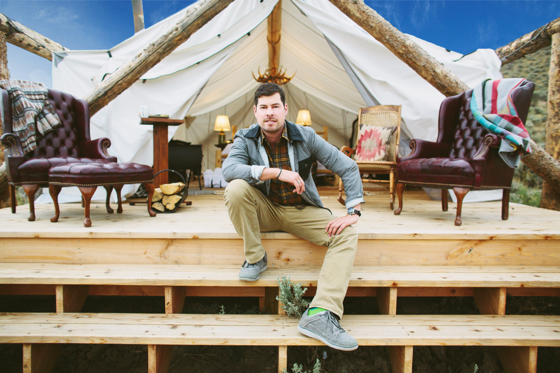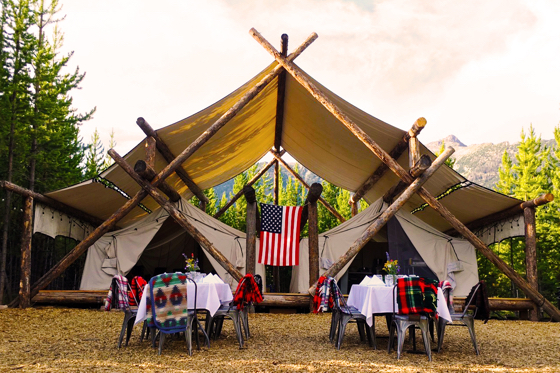In the wide-open space between traditional hotels and shared economy players sit experiential travel companies such as Collective Retreats, which brings luxury accommodations to remote destinations and offers landowners the opportunity to monetize underdeveloped spaces. It is the disruptor that caught the eye of former Starwood president of global development, Simon Turner, who recently became a lead advisor and investor to the company founded by former hotelier Peter Mack.
In December, Mack closed a US$10 million funding round to ramp up expansion in the asset-light outdoor travel space, and he is preparing to launch his fourth and fifth destinations – outside Austin, Texas, and in Sonoma, California. Collective Hill Country, a Retreat at Montesino Ranch, is opening this month with luxury tents on 225 acres of ranch and organic farm in Wimberley, Texas, marking Collective Retreats’ first year-round retreat.
Retreats are open in Vail, Colorado; Big Sky, Montana; and Hudson, New York, and garnering an average rate in the mid-US$500s. Each retreat embraces the local landscape and indigenous culture, offering guests on-site activities, dining and personal hospitality.

The existing retreats feature 10 to 15 units that are plug-and-play and so can increase in number. Most will double in size this year, growing up to 30 units. Potential plans include adding fully contained units with walls, tiny homes, containers, geodesic domes and treehouses.
Mack said the group has global aspirations, likes the idea of surf camps and even believes the concept can fit adjacent to urban locales. “When 2019 rolls around, we expect to have some international announcements made and we are moving in that direction,” he said.
The group also has the opportunity to strap on to preexisting small hotel projects and add inventory seasonally based on demand. It is also looking at a more select-service model to generate wider appeal.
Having flexible inventory in peak seasonal periods also makes the economic model appealing — for example, keeping canvas-type units in Montana in the summer and moving them to Hill Country, Texas, for the winter.
Mack and his team act as developer, operator and in some cases, owner. “We have a very customizable deal structure, but in most of our cases we do a land lease with the property owner, including a performance component, so they’re excited when we do well,” he said.

Development costs vary based on the location, but generally capex is in the 5% to 10% range of what it would cost to develop a comparable ADR, comparable-rated hotel down the road. “We invest a lot more in the experience,” Mack said. “There’s a plethora of aspects that make our asset-light, movable, changeable and flexible units really attractive.”
Mack added that margins are as good as, if not in some cases, better than what owners would see in similar hotel projects, and as they fill in with more units the margins become more favorable, he says.
In what is basically a turnkey operation, a general manager and the culinary team own the on-site experience, overseeing the full project.
What impressed Turner was the team’s ability to adapt the model to meet the objectives of each landowner. He also likes the idea that units can be shut down or moved based on weather patterns. Good weather has meant great demand, to date, which creates superior margins.
Because of the strong experiential component there is a high degree of shareable, rich imagery and storytelling to market the concept. “All of our acquisition and customer management has been done through our internal channels because of that, and we don’t see that changing,” Mack said. “We’re finding that we not only don’t use third-party channels, but we don’t really want to. And as technology improves, as people become even more and more mobile than they were a couple of years ago, it actually becomes more possible for us to do that effectively.”
As for the future, Mack and Turner call it limitless. “We look five, 10 years down the road and see the opportunity to be a significantly larger portfolio size with quaint products,” Mack said.

